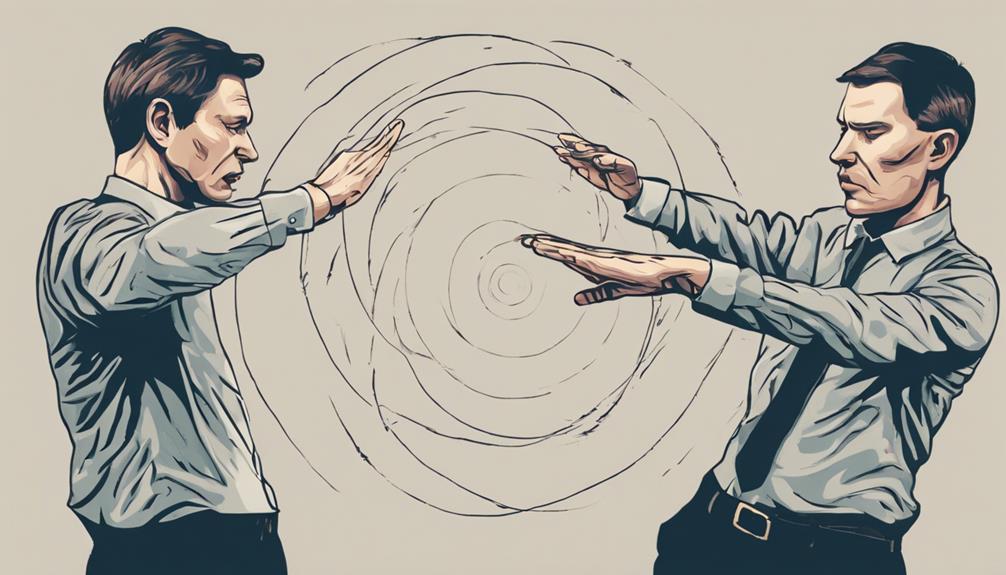Crafting hypnotic scripts for rapid induction success entails precise language, persuasive suggestions, embedded commands, effective pacing techniques, impactful sensory language, and personalized customization. By carefully selecting words that resonate deeply and employing covert techniques like embedded commands, inductions can be facilitated quicker and more effectively. Enhance trust and connection through pacing and leading, while leveraging sensory elements for a more profound experience. Tailoring scripts to individual clients' unique needs and preferences is key for maximum impact. This strategic approach ensures rapid induction success by engaging the subconscious mind effectively. Master these techniques for an elevated hypnotic experience.
Crafting Compelling Hypnotic Suggestions

Crafting compelling hypnotic suggestions requires a delicate balance between linguistic precision and empathetic resonance to maximize the effectiveness of the induction process. When delving into the realm of subconscious influence, it is crucial to employ persuasive language that speaks directly to the individual's innermost thoughts and desires.
By using words and phrases that resonate deeply with the subconscious mind, hypnotic suggestions can bypass resistance and evoke powerful responses.
The art of crafting hypnotic suggestions lies in the ability to choose words that are both engaging and impactful. Utilizing persuasive language techniques such as repetition, positive framing, and sensory-rich descriptions can help to enhance the effectiveness of the suggestions.
By appealing to the emotions and desires of the individual, the hypnotist can create a compelling narrative that guides the subconscious mind towards the desired outcome.
In essence, the key to crafting compelling hypnotic suggestions lies in understanding the power of persuasive language and its ability to influence the subconscious mind. By mastering this skill, hypnotists can create inductions that are not only effective but also deeply transformative for the individual undergoing hypnosis.
Utilizing Embedded Commands Effectively
Mastering the art of utilizing embedded commands effectively is essential for enhancing the impact and success of hypnotic inductions. Embedded commands are powerful tools that allow for the subtle delivery of suggestions to the subconscious mind.
By embedding commands within the script, hidden messages can be communicated to the individual undergoing hypnosis, harnessing the power of suggestion and subliminal influence.
These covert persuasion techniques enable the hypnotist to guide the subject towards the desired outcome without overtly stating the suggestion. The use of embedded commands can help create a profound shift in the individual's mindset, leading to a more effective and rapid induction process.
When crafted skillfully, these commands seamlessly blend into the hypnotic script, influencing the subconscious mind without the subject's conscious awareness.
Enhancing Pacing and Leading Techniques

To optimize the effectiveness of hypnotic inductions, practitioners can refine their skills in enhancing pacing and leading techniques. Building rapport through mirroring techniques is a powerful way to establish a connection with the individual undergoing hypnosis. By subtly mirroring the client's body language, gestures, and even speech patterns, the practitioner can create a sense of familiarity and trust, leading to a more receptive state for induction.
Additionally, paying close attention to non-verbal cues is crucial in pacing and leading. These cues provide valuable insights into the client's level of comfort and receptiveness. By observing subtle changes in facial expressions, body posture, and eye movements, the practitioner can adjust their pacing to ensure a smooth induction process. Establishing a strong connection through non-verbal communication can greatly enhance the effectiveness of the hypnotic script.
Incorporating these techniques into hypnotic sessions can significantly improve the success rate of rapid inductions, making the overall experience more impactful and transformative for the client.
Incorporating Sensory Language for Impact
Effectively utilizing sensory language can significantly enhance the depth and impact of hypnotic scripts during induction sessions. By incorporating visual imagery, such as describing serene natural settings or peaceful scenes, you can transport the client to a place of relaxation and receptivity.
Emotional triggers, like memories of joy or calmness, can evoke powerful responses, deepening the hypnotic experience.
Integrating kinesthetic anchors, such as suggesting feelings of warmth or gentle touches, can create a sense of comfort and security within the client. Additionally, using auditory cues, like soft whispers or soothing music, can further enhance the hypnotic state by engaging the sense of hearing and promoting relaxation.
Sensory language plays a crucial role in guiding individuals into a state of heightened suggestibility and receptiveness. By skillfully weaving visual, emotional, kinesthetic, and auditory elements into hypnotic scripts, practitioners can maximize the impact of inductions and facilitate rapid success in the hypnotic process.
Tailoring Scripts to Individual Clients

Personalizing hypnotic scripts to suit the unique needs and characteristics of individual clients is essential for maximizing the effectiveness of the induction process. A personalized approach allows the hypnotist to tailor the script to the client's specific preferences, beliefs, and experiences, creating a deeper connection and enhancing receptivity to suggestions.
By customizing techniques based on the client's personality traits, goals, and motivations, the induction process becomes more targeted and impactful.
When tailoring scripts to individual clients, it is crucial to gather information through thorough consultations, active listening, and observation. Understanding the client's communication style, language patterns, and preferred sensory modalities can aid in crafting scripts that resonate with them on a profound level.
Additionally, integrating elements that align with the client's interests or values can further enhance engagement and rapport.
Frequently Asked Questions
How Can I Ensure Confidentiality When Using Hypnotic Scripts?
Confidentiality assurance in hypnotic practice is paramount. Uphold professional boundaries by obtaining informed consent, ensuring private settings, and safeguarding client information. Emphasize trust and respect, reinforcing the client's right to privacy throughout the therapeutic journey.
What Are Common Mistakes to Avoid During Rapid Induction?
When utilizing rapid induction techniques, it is crucial to avoid common pitfalls such as rushing the process, lack of rapport, and inadequate preparation. By sidestepping these mistakes, practitioners can achieve successful inductions with efficiency and confidence.
Can Hypnotic Scripts Be Used for Self-Hypnosis?
Utilizing hypnotic scripts for self-hypnosis offers an effective avenue for self-improvement techniques. Through relaxation methods and visualization exercises, individuals can engage in positive affirmations, fostering personal growth and development in a structured and empowering manner.
Are There Ethical Considerations When Using Embedded Commands?
When using embedded commands in hypnotic scripts, it's critical to consider ethical implications surrounding subliminal messages and power dynamics. Ensuring transparency, consent, and respect for the individual's autonomy is essential in maintaining ethical standards.
How Do You Handle Resistance During Hypnosis Sessions?
When handling resistance during hypnosis sessions, it's crucial to approach skepticism with empathy, address objections effectively, and build rapport to overcome doubts. By understanding and managing resistance, the hypnotic process can proceed smoothly towards positive outcomes.
Conclusion
In conclusion, mastering the art of crafting hypnotic scripts is essential for achieving rapid induction success.
By incorporating compelling suggestions, embedded commands, pacing and leading techniques, sensory language, and tailoring scripts to individual clients, hypnotists can greatly enhance their effectiveness.
With practice and dedication, hypnotists can maximize the impact of their scripts and create powerful experiences for their clients.


